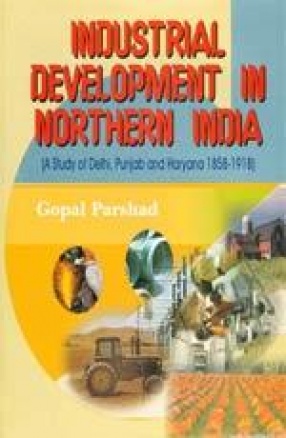The book examines the industrial development in northern India during 1858-1918. the highlights of the book are: the growth and changes, due to colonial rule in the handicraft and modern industry particularly in Delhi, Punjab and Present Haryana. Continuity and changes were witnessed in the nature of Industrial development. Handicraft and modern industries existed simultaneously under the colonial rule in north India. At the same time change was also occurring both in handicraft and modern industry. Old traditional system was breaking slowly; foreign goods were entering in Indian market and as well as in villages. Britishers did not want to develop the modern industries. Even then handicraft industry continued to fulfill the local needs of urban and rural society. The Britishers provided some fillip to traditional industry in this region. In the late 19th century, modern industry was quite slow in comparison to western and eastern part of the country. In north India first cotton mill was established in Delhi 1889. In 1918, about 414 industries were using power as energy. The artisans and workers were also influenced by the colonial rule. The machine-made goods affected adversely the traditional industry and artisans. Some artisans had to give up their hereditary occupations and became factory workers. The number of the factory workers increased during the War period. Colonial rule passed some factory Acts to give some peanuts to the workers. The cause behind the industrial development and changing position in the life of artisans and workers and British policy towards the both have been analysed in this book.
Industrial Development in Northern India: A Study of Delhi, Punjab and Haryana 1858-1918
In stock
Free & Quick Delivery Worldwide
reviews
Bibliographic information
Title
Industrial Development in Northern India: A Study of Delhi, Punjab and Haryana 1858-1918
Author
Edition
1st ed.
Publisher
ISBN
8187521201
Length
xii+259p., Notes; References; Bibliography; Index; 24cm.
Subjects





There are no reviews yet.